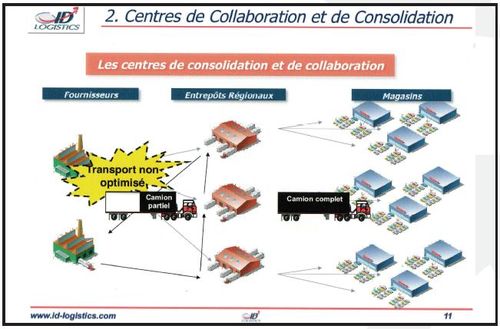The Consolidation and Collaboration Center is an essential tool for companies seeking to optimize their internal processes. Thanks to its ability to consolidate data and resources, it offers greater visibility and project coordination. However, it can also pose challenges in terms of data security and set-up costs. Choosing a consolidation center therefore requires a thorough analysis of its advantages and disadvantages.
Did you get it? - Episode 3: Social and Solidarity Economy
[arve url="https://www.youtube.com/embed/SB-lnD04f3U "/]
What are the advantages of logistics and transport?
Logistics and transport are essential sectors of the modern economy, playing a crucial role in the efficient management of goods and services.
Here are some of the key advantages of logistics and transport:
1. Improving operational efficiency: Logistics and transport optimize the supply, storage, handling and distribution of goods. This enables companies to reduce costs, increase productivity and improve profitability.
2. Market expansion : Thanks to efficient transport systems, companies can reach new markets and potential customers. This promotes economic growth, encourages international trade and stimulates business activity.
3. Customer satisfaction : Good logistics management and reliable transport ensure fast, punctual and safe delivery of products to customers. This helps to boost customer satisfaction, build customer loyalty and maintain the company's good reputation.
4. Inventory optimization : With effective logistics planning, companies can minimize inventory costs by avoiding overstocking or stock-outs. This optimizes inventory management and reduces capital expenditure.
5. Reducing waste and environmental impact: Well-organized logistics minimize waste, optimize transport routes and reduce greenhouse gas emissions. This helps preserve the environment and promote sustainable development.
6. Job creation : The logistics and transport sectors offer a wealth of job opportunities, both in logistics management and in the transport professions (drivers, delivery personnel, etc.). This helps stimulate the economy and reduce unemployment.
In conclusion, logistics and transport play an essential role in the economy, enabling better management of goods and services. These sectors offer numerous benefits, such as improved operational efficiency, market expansion, customer satisfaction, inventory optimization, reduced waste and environmental impact, and job creation.
What is a consolidated parcel?
A consolidated parcel is a common practice in transport and logistics. It involves grouping several parcels from different shippers into a single shipment. The main idea behind this is to optimize the use of space in the transport vehicle, thus reducing costs for customers.
The consolidated parcel allows several smaller shipments to be combined into a single shipment, which is advantageous for both shippers and carriers. Shippers generally benefit from lower rates, since they share the cost of transport with other shipments. Carriers, for their part, optimize their use of loading space, thus increasing their profitability.
When a consolidated parcel is shipped, each individual parcel is often labeled and packed separately to avoid confusion or loss. At destination, the parcels are then separated and distributed to their respective recipients.
This method is widely used in the logistics industry, particularly for small consignments. It optimizes transport operations and reduces costs for all parties involved.
What is the role of the warehouse?
The warehouse plays an essential role in the management of a news site. It's a physical or virtual space where content such as articles, photos, videos and other multimedia resources used on the site are stored and maintained. The warehouse offers a secure, centralized storage solution, making it easier for editors and publishers to access and manage content.
In addition to serving as a storage facility, the warehouse is also responsible for organizing and classifying content. It generally uses content management systems (CMS) to index and categorize articles according to subject, publication date, keywords and so on. This efficient organization enables site users to find the information they're looking for quickly and easily.
What's more, the warehouse facilitates copyright management by retaining information on the authors, photographers and sources of content published on the news site. This ensures that copyrights are respected and avoids problems related to intellectual property.
In a nutshell, the warehouse is a key element of a news site because it stores, organizes and secures content, making it easier to find and publish articles.
In conclusion, a consolidation and collaboration center offers a number of advantages benefits and disadvantages. On the one hand, it enables resources and skills to be pooled in a single location, promoting communication and coordination between team members. This can lead to improved efficiency and productivity, as well as better project management. What's more, geographical proximity facilitates the exchange of ideas and the rapid resolution of problems.
On the other hand, the concentration of activities in a consolidation center can have significant disadvantages. The costs associated with renting or buying space can be high, and it can be difficult to find a centralized location that suits all team members. What's more, this approach can limit the flexibility and mobility of workers, who may prefer to work remotely or in coworking spaces.
It is therefore essential to carefully weigh up the advantages and disadvantages of a consolidation and collaboration center before making a decision. Every company needs to find the right balance between centralizing activities and the flexibility of remote working.








